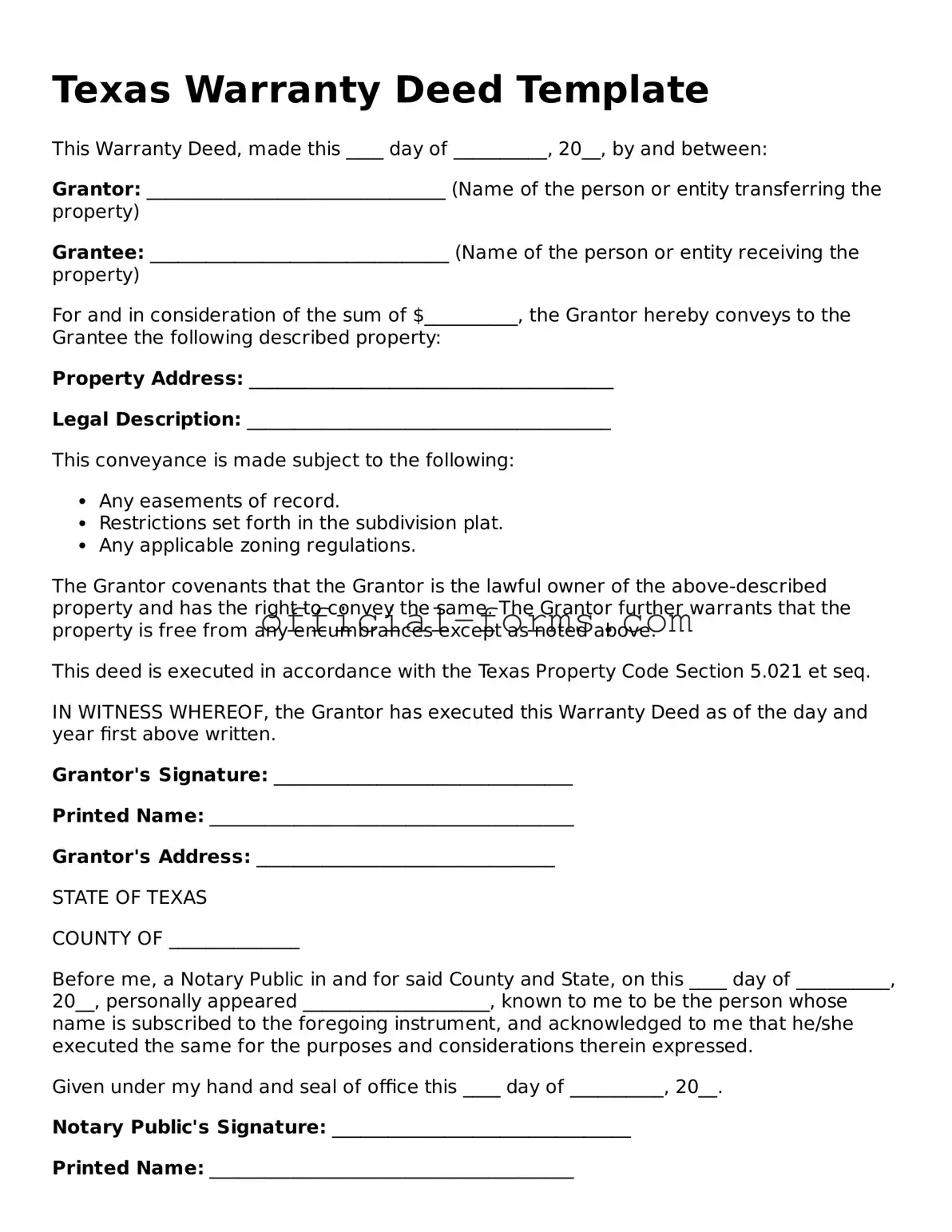When filling out a Texas Deed form, many individuals inadvertently make mistakes that can lead to complications down the road. One common error is failing to include the full legal description of the property. This description is crucial, as it identifies the property precisely. A vague or incomplete description can create confusion and legal disputes later on.
Another frequent mistake is not properly identifying the grantor and grantee. The grantor is the person transferring the property, while the grantee is the person receiving it. If these parties are not clearly named, it can raise questions about ownership and intent. Additionally, using nicknames or informal titles instead of legal names can complicate matters.
Many people also overlook the necessity of having the deed signed and notarized. A deed that is not signed by the grantor or lacks notarization may not be valid. This step is essential to ensure that the transfer of property is legally recognized. Without proper signatures, the deed may be challenged in court.
Another mistake involves the failure to include the date of the transaction. While it may seem minor, the date is significant for establishing the timeline of ownership. It can affect rights, claims, and even tax obligations. Leaving this information out can lead to misunderstandings about when the property changed hands.
People often forget to check for any outstanding liens or encumbrances on the property before completing the deed. If there are existing claims against the property, they must be addressed before the transfer can be valid. Ignoring this step can result in financial liability for the new owner.
Using the wrong type of deed is another pitfall. Texas recognizes several types of deeds, including warranty deeds and quitclaim deeds. Each serves a different purpose, and choosing the wrong one can affect the rights of the parties involved. It’s essential to understand which type of deed is appropriate for the specific situation.
Inaccurate information about property boundaries can lead to disputes with neighbors. When filling out the deed, it is vital to ensure that the boundary lines are correctly represented. Misunderstandings about property lines can result in costly legal battles and strained relationships.
Additionally, people sometimes neglect to include any special clauses or conditions that may apply to the property transfer. If there are specific terms agreed upon by both parties, these should be clearly stated in the deed. Failing to do so can lead to confusion and disagreements in the future.
Another common oversight is not providing the correct mailing address for the grantee. This address is necessary for future correspondence regarding the property. If the address is incorrect, important documents may not reach the new owner, leading to potential issues with taxes or property management.
Finally, many individuals forget to record the deed with the county clerk's office after it has been executed. Recording the deed is a crucial step in making the transfer public and legally binding. Without this step, the new owner's rights may not be fully protected against future claims or disputes.
